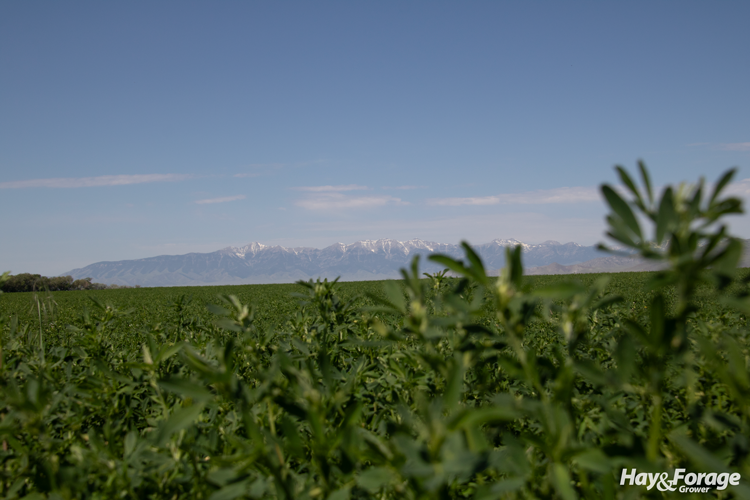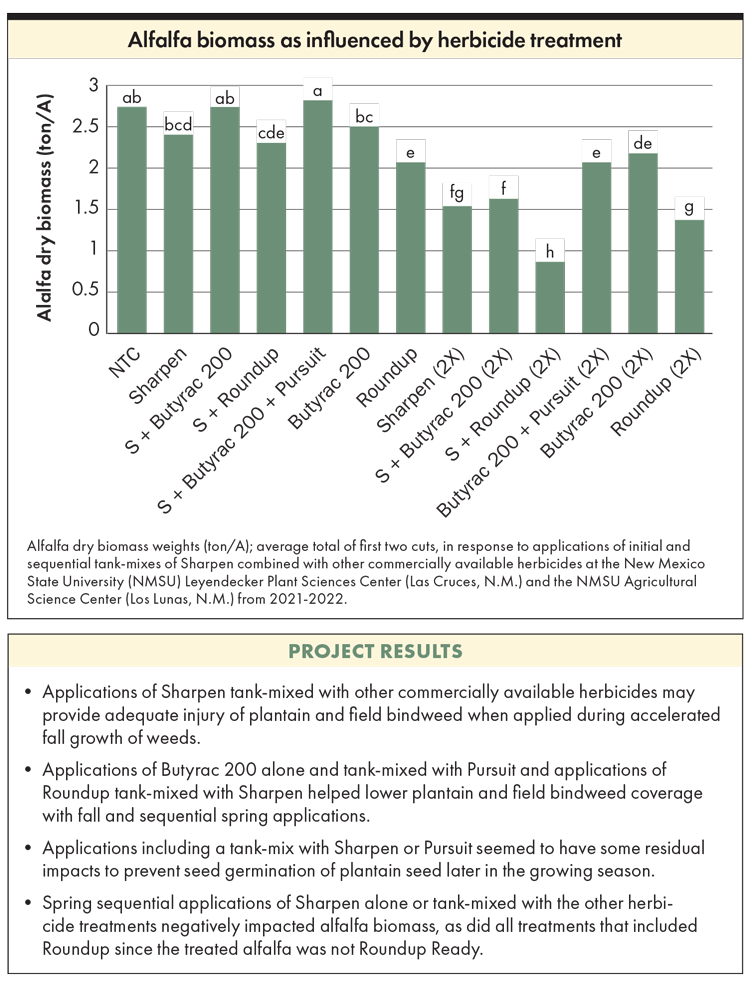
As demand for quality alfalfa continues to rise, managing weeds remains a critical and ever-present component of successful production, according to Leslie Beck, extension weed specialist at New Mexico State University (NMSU). “Since I started my position at NMSU, I was consistently told by farmers that difficult-to-control perennial weeds such as plantain and field bindweed were not only highly impactful to production and profitability, but there really weren’t any effective methods of control . . . even with herbicides,” Beck said.
In order to address the problem, Beck was awarded funding through NAFA’s Alfalfa Checkoff for her project that would address the issue. “In 2017, we learned of a recent label for the herbicide Sharpen (saflufenacil) for applications in dormant season alfalfa,” Beck explained. “This, coupled with the knowledge that the best timing for an effective herbicide application in difficult-to-control perennial weeds was traditionally in the fall, started the process of evaluating Sharpen as a potential tool for late-season control of both plantain and field bindweed.”
Beck’s initial studies showed single late-season applications of Sharpen enhanced herbicide injury to plantain with no observable decline in alfalfa biomass in the spring compared to the nontreated control. However, injury to the plantain with all the herbicide treatments was still limited enough to allow for eventual recovery but not control. The follow-up study focused on an evaluation of applications of Sharpen alone or tank-mixed with other products such as Butyrac 200 and Roundup alone, or Butyrac 200 tank-mixed with Pursuit for greater control potential.
“We also wanted to evaluate whether the addition of sequential applications made the following spring, traditionally the second-best timing for herbicide applications to perennial weeds, improved injury, and weed control for plantain leading into the next growing season with minimal negative impacts to alfalfa biomass,” Beck said. “Additionally, since previous studies were showing potential promise with plantain, we also wanted to see how the tank mixes and herbicide application timings impacted field bindweed using the same methods as the plantain research.”
The study found that herbicide application timings are critical for effective management of difficult-to-control perennial weeds. Sharpen, tank-mixed with other herbicides such as Butyrac 200 and Roundup, as well as Butyrac 200 tank-mixed with Pursuit, reduced the populations of both plantain and field bindweed when applied during active, root-targeting growth in the fall.

Another key take-home message is even though Sharpen doesn’t have a label for spring applications in actively growing alfalfa, it’s efficacy, which is comparable to the other herbicide treatments, shows the potential for effective late-season weed control in fallow or grass forage rotational cropping systems.
In future research, Beck would like to observe the impacts of changing the spring sequential to a preemergent herbicide to prevent seed germination. “No herbicide treatment or timing was able to prevent field bindweed from eventually recovering, so we’d like to look at sequential fall applications for established perennial weed populations like field bindweed, notoriously difficult to control with one herbicide application alone,” she said.
For further information on results of Alfalfa Checkoff-funded projects, visit NAFA’s website at alfalfa.org/research.php.
This article appeared in the April/May 2024 issue of Hay & Forage Grower on pages 18-19.
Not a subscriber? Click to get the print magazine.

